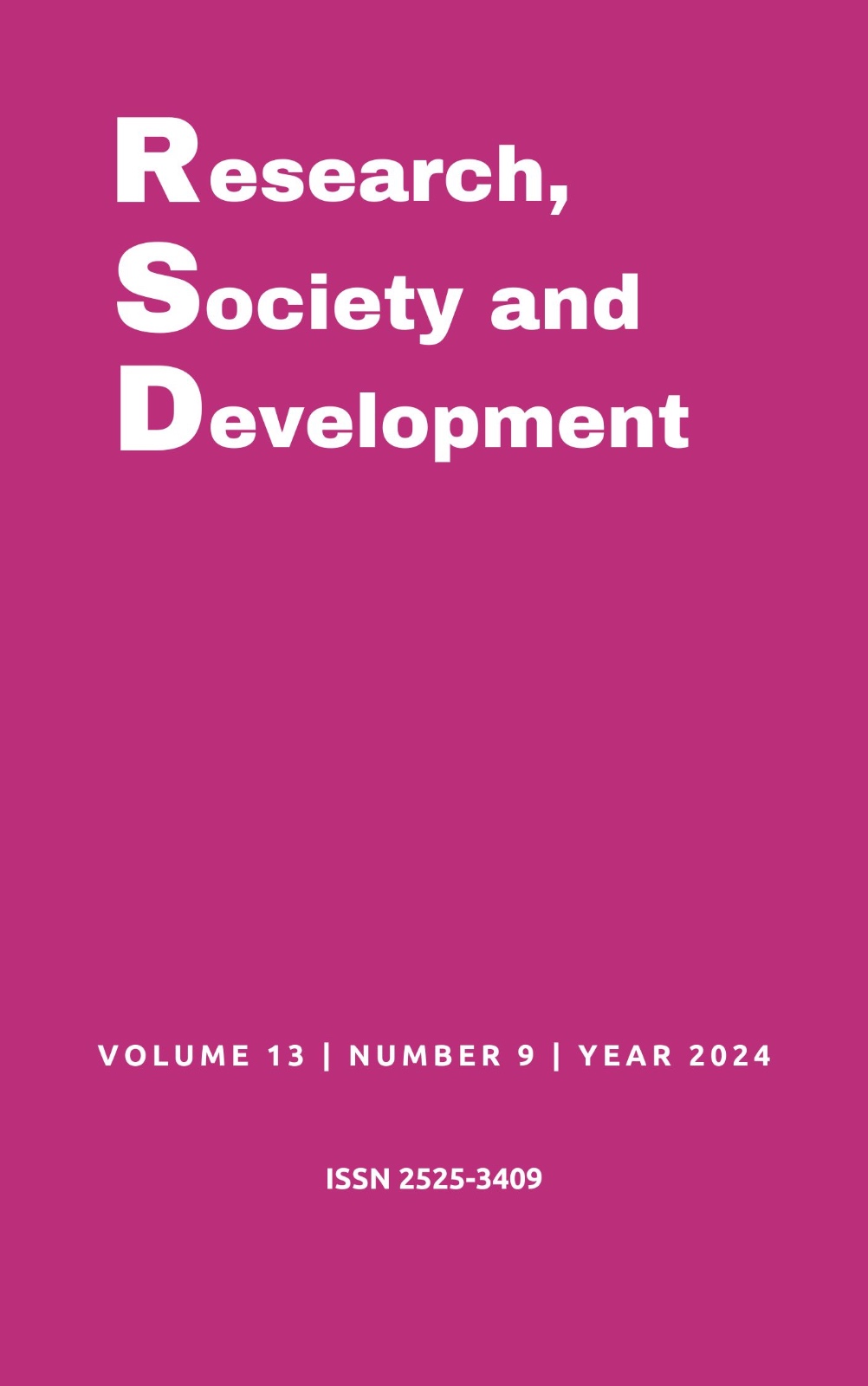Central nervous system, neurotransmitters and psychopathology: A cropped view of the subject
DOI:
https://doi.org/10.33448/rsd-v13i9.46814Keywords:
Central nervous system, Neurotransmitters, Psychopathology, Psychology.Abstract
The objective of the article is to expose the history of the composition of the Central Nervous System (CNS) from the perspective of psychopathology and anatomy, revisit the literature on the group of neurotransmitters with small, fast-acting molecules. The other group is composed of neuropeptides, which are larger and slower molecules. Describe the composition of synapses and the importance of neurotransmitters and their classes, and also explain the psychopathology associated with psychosocial factors and neurotransmitters. This is a bibliographical research based on a literature review, narrative type. It is the neuropsychological functions of the brain that have the power to process experiences, transforming them into knowledge. The Central nervous system is a kind of substrate that supports the psychic and expands the neural network. There are more than 50 chemical substances that act as synaptic transmitters, they are the integrative functions of the nervous system that channel information considered important to the integrative regions. The emotions felt by each person are a response to a certain chemical release in the body, but this goes further and involves the psychosocial environment of each individual. In the end, it will be possible to associate which neurotransmitter dysfunctions are related to the main psychopathological disorders, and conclude that the professional in psychology must understand psychopathology, the source of pathological support for the human psyche and the influence of neurotransmitters and the disorders resulting from their imbalance, being Such knowledge is extremely necessary to compose the psychopathological assessment of the demanding patient.
References
Associação, AP (2022). Manual de publicação da APA: o guia oficial para o estilo APA (7a ed.). Grupo A. https://integrada.minhabiblioteca.com.br/books/9786558820604;
Barlow, D.H. (2015). Psicopatologia: uma abordagem integrada; tradução Noveritis do Brasil, revisão técnica Thais Cristina Marques dos Reis, (2a ed.), Cengage Learning;
Bear, M. F.; Connors, B. W.; Paradiso, M. A. (2017). Neurociência: desvendando o sistema nervoso. (4a ed.), Artmed;
Boff, T.C., Soares, S.J.B., Lima, M.D.M.M, Ignácio, Z.M (2021). Ativação do glutamato nos transtornos de ansiedade e no transtorno obsessivo-compulsivo. II Simpósio de Neurociências Clínica e Experimental: Doenças Neurodegenerativas. UFFS. https://portaleventos.uffs.edu.br/index.php/SIMPNEURO/article/view/15862;
Carobrez, A. de P.. (2003). Transmissão pelo glutamato como alvo molecular na ansiedade. Brazilian Journal of Psychiatry, 25, 52–58. https://doi.org/10.1590/S1516-44462003000600012;
Cunha, P. T. B. (2018). Análise evolutiva da rede de interação dos genes associados a transtornos mentais e comportamentais comparada ao sistema biológico de neurotransmissão. Monografia (graduação), UFRGN. Centro de Biociências. Natal. https://repositorio.ufrn.br/handle/123456789/43188;
Dalgalarrondo, P. (2019). Psicopatologia e semiologia dos transtornos mentais. (3a ed.), Artmed.
Flores, D. (2019). Sinapses. Website Escola Educação. https://escolaeducacao.com.br/sinapses;
Gil, A. C. (2002). Como elaborar projetos de pesquisa. Atlas.
Hall, J. E. (2011) Tratado de fisiologia médica [recurso eletrônico], tradução Alcides Marinho Junior et al.]. Elsevier. recurso digital: il.;
Lacerda, G. C. (2023). Neurotransmissores. https://www.kenhub.com/pt/library/anatomia/neurotransmissores
Machado, A. B. M. (2000). Neuroanatomia Funcional, (2a ed.), Atheneu. https://morfomed.files.wordpress.com/2016/04/livro-neuroanatomia-funcional-machado.pdf;
Marchini, J. S. et al. (2016). Aminoácidos. São Paulo: ILSI Brasil - International Life Sciences Institute do Brasil, 2016;
Marconi, M. A; Lakatos, E. M. (2010). Fundamentos de Metodologia Científica. (7a ed.), Atlas;
Nadal-Vecens et al. (2009). Farmacologia da Neurotransmissão Serotoninérgica e Adrenérgica Central. Princípios de Farmacologia: A Base Fisiopatologia da Farmacoterapia. Guanabara Koogan, p. 186-2001. https://www.docsity.com/pt/farmacologia-da-neurotransmissao-serotoninergica-e-adrenergica-central/4736525/;
Oliveira, L. F. (1994). Synaptic Transmission Key Words: PHARMACOLOGY: synaptic transmission Rev Bras Anestesiol; 44: 1: 25 – 33. https://www.bjan-sba.org/article/5e498bc60aec5119028b47c2/pdf/rba-44-1-25.pdf;
Oliveira, A. A., Campos Neto, F. H. (2015). Anatomia e fisiologia: a incrível máquina do corpo humano. Fortaleza: EdUECE, 2015. 183 p.; il. Livro_Anatomia e Fisiologia Humana.PDF (capes.gov.br);
Raimundo, A. K. de S., Sousa, L. A., Silveira, A. F., R., Cequeira, M. C. D., Rodrigues, J., & Dini, P. D. (2017). Dosagem de serotonina sistêmica após aplicação da eletroestimulação nervosa transcutânea (tens). Fisioterapia Em Movimento (Physical Therapy in Movement), 22(3). https://periodicos.pucpr.br/fisio/article/view/19459;
Silva, V. L. M., at al. (2013). Aminas biogênicas como indicadores de qualidade de salames e produtos cárneos fermentados, Enciclopédia Biosfera, Centro Científico Conhecer - Goiânia, 9(16), 201369.https://www.conhecer.org.br/enciclop/2013a/agrarias/aminas%20biogenicas.pdf;
Tristão, I. (2023). O que é sinapse? https://conhecimentocientifico.r7.com/sinapse-o-que-e/;
USP. (2012). Fisiologia. https://midia.atp.usp.br/impressos/redefor/EnsinoBiologia/Fisio_2011_2012/Fisiologia_v2_semana02;
USP. (2022). Tecidos encefálicos. Instituto de Ciencias Biológicas (ICB). fisio2.icb.usp.br;
Downloads
Published
Issue
Section
License
Copyright (c) 2024 Cliciane da Silva Monteiro

This work is licensed under a Creative Commons Attribution 4.0 International License.
Authors who publish with this journal agree to the following terms:
1) Authors retain copyright and grant the journal right of first publication with the work simultaneously licensed under a Creative Commons Attribution License that allows others to share the work with an acknowledgement of the work's authorship and initial publication in this journal.
2) Authors are able to enter into separate, additional contractual arrangements for the non-exclusive distribution of the journal's published version of the work (e.g., post it to an institutional repository or publish it in a book), with an acknowledgement of its initial publication in this journal.
3) Authors are permitted and encouraged to post their work online (e.g., in institutional repositories or on their website) prior to and during the submission process, as it can lead to productive exchanges, as well as earlier and greater citation of published work.


